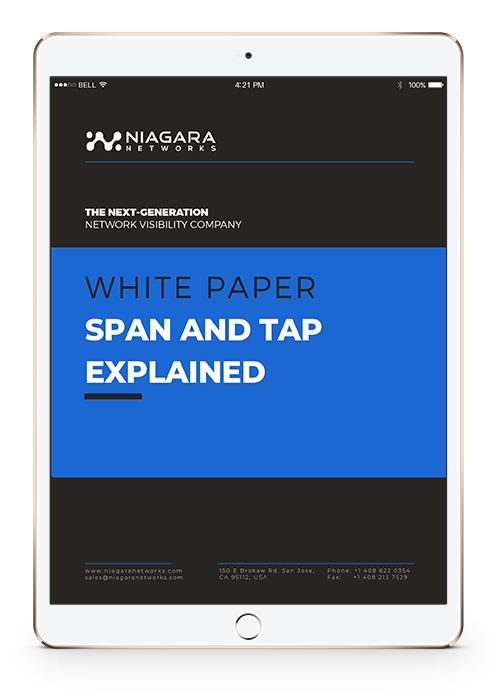SPAN Vs Tap
A Detailed Explanation
In a basic network infrastructure, there are out-of-band monitoring devices such as probes, intrusion detection systems, network recorders and network analyzers.
It is common to deploy an out-of-band monitoring device to sit passive on the network without modifying or altering any of the network traffic. Two ways to passively monitor your network include using a Switch Port Analyzer (SPAN) port or a Test Access Point (TAP).

After reading this white paper, you will be able to:
- What's a network TAP
- Know how to passively monitor your network, without affecting real-time traffic
- Understand a SPAN port’s advantages and its limitations
- Distinguish between different TAP devices that you could use
- Utilize the advantages a TAP has over a SPAN port
- Choose the right out-of-band passive monitoring device to fit your specific needs
As mentioned, there are two common approaches to deploying a passive device in an out-of-band fashion: connecting the device to either a Switch Port Analyzer (SPAN) or a Test Access Point (TAP).
A SPAN is a dedicated port on a managed switch that takes a mirrored copy of network traffic off the switch to be sent to a monitoring device. A passive TAP is used mainly in fiber-optic networks, where it receives traffic from both directions of the network and will split the incoming light so that 100% of traffic is seen on the monitoring tool.
Both approaches will not affect the real network traffic and the out-of-band appliance can be connected and disconnected from the network without any downtime or disruption. Also, if the monitoring device fails for whatever reason, such as a power failure or software malfunction, traffic will continue to flow on the network as usual.
This white paper offers a comprehensive overview of the two approaches for out-of-band network visibility, SPAN and TAP, as well as an in-depth explanation of the differences between them.